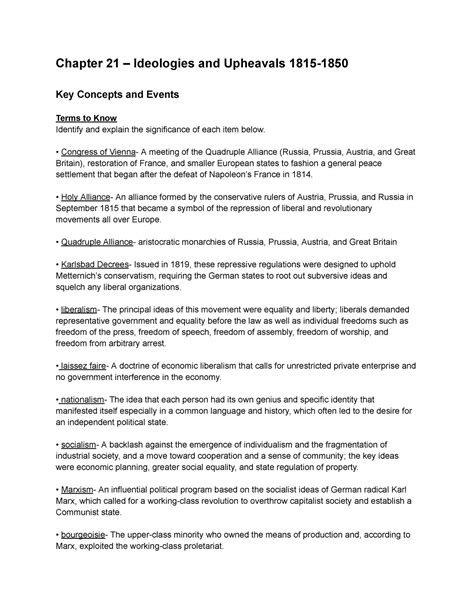The Long 19th Century: A Period of Dramatic Change

The Long 19th Century, spanning from the French Revolution in 1789 to the outbreak of World War I in 1914, was a transformative period marked by unprecedented political, social, economic, and cultural changes.
Industrial Revolution: A Driving Force
Industrialization emerged as the driving force behind the Long 19th Century, revolutionizing society and economies:
- Urbanization: Industrialization spurred mass migration from rural areas to cities, leading to the rapid growth of urban centers.
- New Technologies: Inventions such as the steam engine, power loom, and cotton gin boosted production and transformed industries.
- Economic Growth: Industrialization led to increased productivity and economic expansion, creating new wealth and opportunities.
Political Revolutions: Reshaping Europe
Political revolutions throughout the Long 19th Century reshaped the political landscape of Europe:
- French Revolution: The French Revolution of 1789 overthrew the monarchy and established a republic, inspiring revolutionary movements across Europe.
- Revolutions of 1848: Throughout Europe, a wave of revolutions in 1848 sought to overthrow monarchies and establish democratic governments.
- Unification of Germany and Italy: In the mid-19th century, efforts by Otto von Bismarck and Giuseppe Mazzini led to the unification of Germany and Italy, respectively.
Nationalism and Imperialism: Expanding Horizons
Nationalism emerged as a powerful force during the Long 19th Century, promoting national unity and loyalty:
- National Identity: Nationalism inspired individuals to identify with their nation and its culture, fostering a sense of belonging and patriotism.
- Imperialism: European powers competed for control over territories outside of Europe, expanding their empires through colonization and conquest.
Social and Cultural Transformations
Alongside political and economic changes, the Long 19th Century witnessed significant social and cultural transformations:
- Urbanization and Social Inequality: Rapid urbanization created new social classes and increased income disparities, leading to social unrest and labor movements.
- Education and Literacy: Expanding access to education and literacy empowered individuals, fostering intellectual progress and social mobility.
- Artistic and Literary Revolutions: Romanticism, Realism, and Impressionism emerged as new artistic movements, challenging traditional norms and expressing the spirit of the age.
Key Terms and Concepts
- Industrial Revolution
- Urbanization
- Nationalism
- Imperialism
- Social Inequality
- Bourgeois
- Revolution
Historical Figures
- Napoleon Bonaparte
- Otto von Bismarck
- Giuseppe Mazzini
- Karl Marx
- Queen Victoria
Tips and Tricks for Success
- Understand the key themes and concepts of the Long 19th Century.
- Study the major events and revolutions that shaped the period.
- Analyze the causes and consequences of industrialization and urbanization.
- Explore the social, political, and cultural changes that occurred during this transformative period.
Step-by-Step Approach
1. Review the basics. Familiarize yourself with the key terms, concepts, and historical figures of the Long 19th Century.
2. Study the major events. Create a timeline of the significant events that occurred during this period, including the French Revolution, Revolutions of 1848, and Unification of Germany and Italy.
3. Analyze the impact of industrialization. Examine how industrialization transformed society, economies, and the environment. Analyze the social and economic changes it brought about.
4. Discuss political revolutions. Explain the causes and consequences of the French Revolution and the Revolutions of 1848. Discuss their impact on the political landscape of Europe.
5. Explore nationalism and imperialism. Analyze the rise of nationalism and its impact on European politics and society. Discuss the motives and consequences of European imperialism.
Useful Tables
| Event | Date | Significance |
|---|---|---|
| French Revolution | 1789 | Overthrew the French monarchy and established a republic |
| Revolutions of 1848 | 1848 | Wave of revolutions throughout Europe, seeking to overthrow monarchies |
| Unification of Germany | 1871 | Prussia led the unification of German states under Otto von Bismarck |
| Unification of Italy | 1861 | Giuseppe Mazzini played a key role in unifying Italian states |
| Social Class | Characteristics | Income |
|---|---|---|
| Bourgeois | Wealthy middle class, often involved in business and finance | High |
| Proletariat | Working class, employed in factories and industries | Low |
| Aristocracy | Traditional ruling class, inherited wealth and power | High |
| Peasantry | Rural population, engaged in agriculture | Low |
| Artistic Movement | Period | Key Features |
|---|---|---|
| Romanticism | Early 19th century | Emphasized imagination, emotion, and individuality |
| Realism | Mid-19th century | Depicted everyday life and social issues in a realistic manner |
| Impressionism | Late 19th century | Captured fleeting moments and light effects through brushstrokes |
| Historical Figure | Contribution | Impact |
|---|---|---|
| Napoleon Bonaparte | Emperor of France, led French army to victories | Reshaped the political map of Europe |
| Otto von Bismarck | Chancellor of Prussia, unified Germany | Established a strong German empire |
| Giuseppe Mazzini | Leader of Italian unification movement | United Italian states into a single kingdom |
| Karl Marx | Sociologist and revolutionary, founder of Marxism | Influenced socialist and communist movements |
| Queen Victoria | Queen of England, reigned during a period of industrial and imperial expansion | Symbolized British power and stability |
